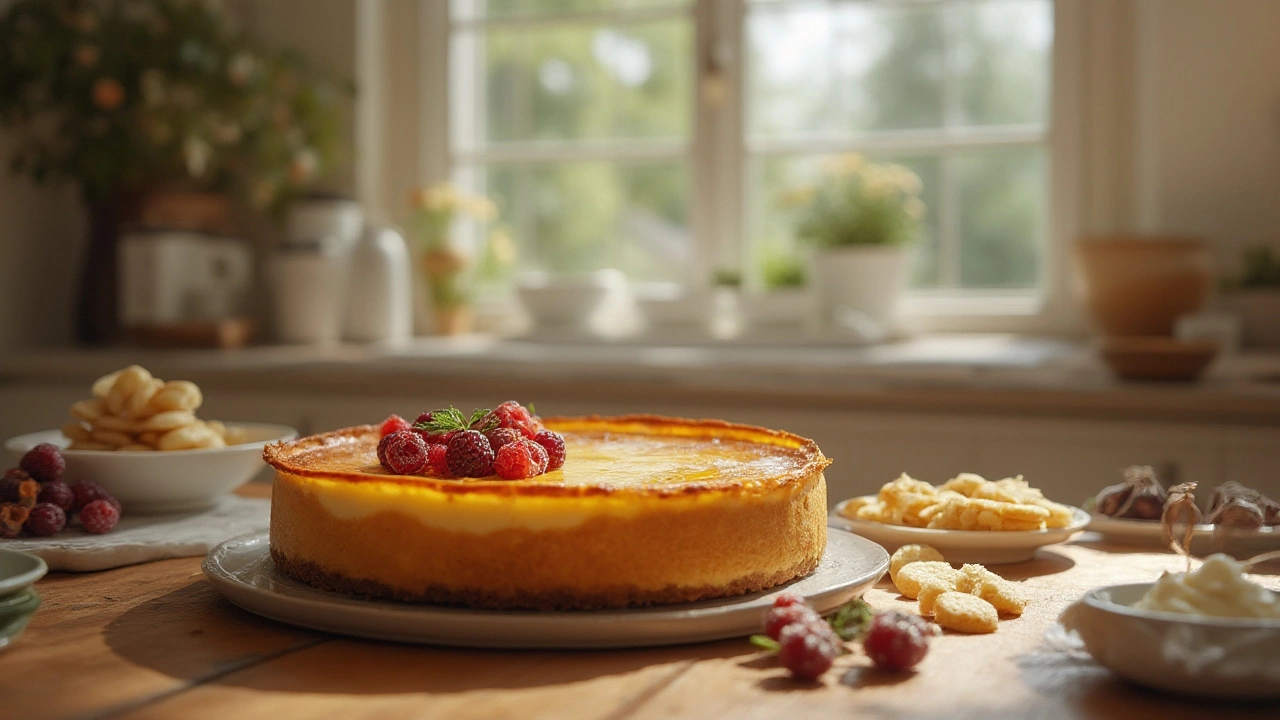
What Makes Cheesecake Taste So Good? The Delicious Science Explained
Ever wondered why cheesecake tastes so irresistible? This guide explores its creamy magic, secret ingredients, texture, and the science behind the perfect slice.
Ever wonder why a slice of cheesecake feels like a hug for your taste buds? It’s not magic – it’s a mix of a few smart ingredients and the way they work together. In this article we’ll break down the main reasons the dessert is so addictive, and give you quick tips to make yours even better.
The star of any cheesecake is, of course, cream cheese. This soft cheese is packed with fat and protein, which create a smooth, velvety mouthfeel. Fat carries flavor, so the buttery taste spreads evenly across your palate. The slight tang from the lactic acid keeps the sweetness from becoming cloying, giving the dessert a balanced profile.
When you choose full‑fat cream cheese instead of a low‑fat version, you keep that luscious texture. If you’re looking for a lighter bite, you can blend half the cream cheese with Greek yogurt – you still get tang, but with less heaviness.
Sugar does more than just add sweetness. It helps dissolve the proteins in the cream cheese, making the batter smoother. As the cheesecake bakes, sugar caramelizes a little, adding subtle depth and a faint golden note.
Eggs act like tiny glue sticks. Their proteins coagulate when heated, turning the liquid batter into a firm yet creamy slice. The right egg‑to‑cream‑cheese ratio prevents cracks and gives you that classic, slightly custardy bite.
For extra flavor, try swapping part of the granulated sugar with a bit of brown sugar or a dash of honey. The extra molasses adds a gentle, caramel‑like undertone that many people love.
Most cheesecakes sit on a crumbly crust made from crushed biscuits and melted butter. The biscuit crumbs (often digestive biscuits or graham crackers) bring a toasty, slightly sweet crunch that contrasts with the smooth filling.
Butter in the crust does two things: it helps the crumbs bind together and adds a rich, buttery flavor that rounds out the overall taste. Press the crust firmly into the pan so it stays in place, but don’t over‑bake – you want a slight firmness, not a hard base.
Beyond the basics, a pinch of vanilla, a splash of lemon juice, or a spoonful of sour cream can lift the flavor. Vanilla adds warmth, lemon cuts through the richness with bright acidity, and sour cream introduces a gentle tang that keeps the cheesecake lively.
Don’t forget toppings. Fresh berries, a drizzle of caramel, or a simple dusting of cocoa powder can turn a plain slice into a show‑stopper. The key is to add texture and a burst of complementary flavor without masking the core cheesecake taste.
Most recipes call for a water bath (bain‑marie). This gentle, moist heat prevents the edges from over‑cooking, which can cause cracks and a dry texture. If you skip the water bath, keep the oven temperature low and watch the cheesecake – it should jiggle slightly in the center when you’re done.
After baking, let the cake cool slowly in the oven with the door ajar, then chill it in the fridge for at least four hours. This gradual cooling lets the flavors meld and the texture set perfectly.
In short, cheesecake tastes good because it combines a rich, tangy dairy base, balanced sweetness, a supportive crust, and smart flavor boosters, all baked in a way that preserves creamy texture. Use these basics, experiment with a few tweaks, and you’ll keep delivering that comforting, irresistible slice every time.

Ever wondered why cheesecake tastes so irresistible? This guide explores its creamy magic, secret ingredients, texture, and the science behind the perfect slice.